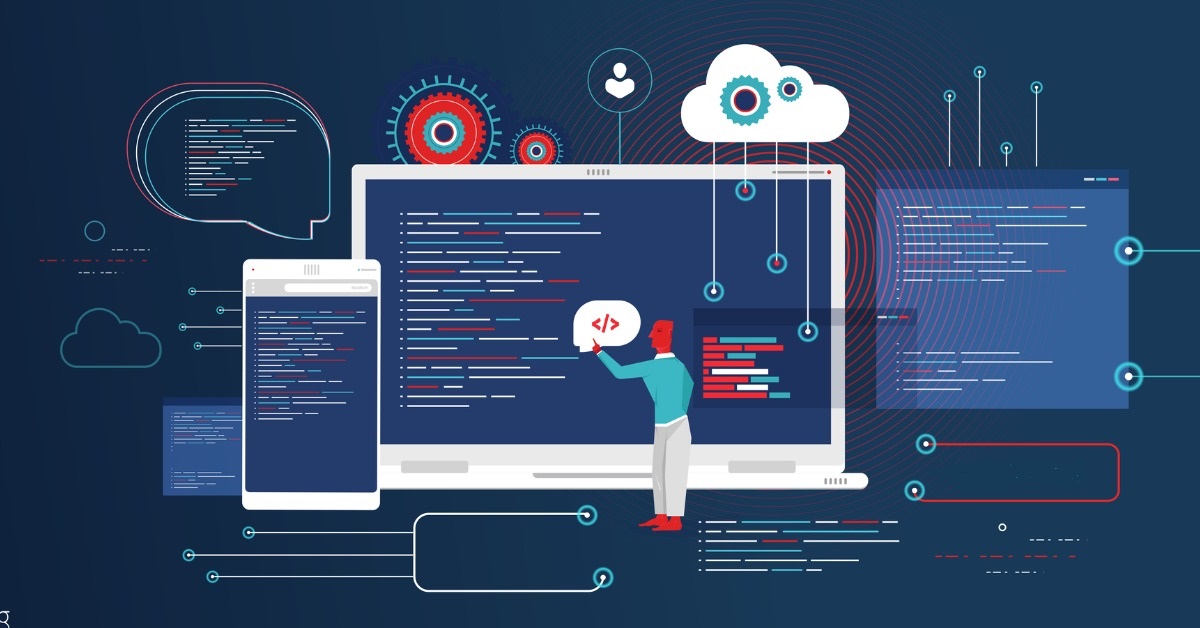
Web programming is an essential skill in today’s digital era, allowing individuals to create websites, applications, and digital experiences that power the internet. If you’re looking to start your journey in web programming, this guide will walk you through the basics, including programming languages, tools, and best practices to learn web development from scratch.
What Is Web Programming?
Web programming, also known as web development, involves writing, designing, and maintaining the code that powers websites and web applications. This process includes creating the structure, design, functionality, and interactivity of a website.
Web programming is divided into two primary categories:
- Frontend Development: Focuses on the part of the website users see and interact with.
- Backend Development: Deals with the server side, including databases and server logic.
Why Learn Web Programming?
Web programming offers several advantages:
- Career Opportunities: High demand for web developers in industries worldwide.
- Creative Freedom: Build websites and apps that bring your ideas to life.
- Flexibility: Work as a freelancer, for a company, or create your own projects.
- Scalability: Websites and apps can reach global audiences, offering vast potential.
Basic Concepts of Web Programming
Before diving into coding, it’s essential to understand the foundational concepts of web programming:
- Client-Server Model: The communication framework between users (clients) and servers. When you visit a website, your browser sends a request to a server, which processes it and sends back the requested data.
- HTML (Hyper Text Markup Language): The building block of web pages. It defines the structure and content of a web page using tags.
- CSS (Cascading Style Sheets): Responsible for styling and layout. It allows you to control the appearance of web pages, including fonts, colors, and layouts.
- JavaScript: Adds interactivity and dynamic behavior to web pages. From animations to form validation, JavaScript makes websites functional and engaging.
- Backend Technologies: Includes server-side programming languages, databases, and APIs. These handle data processing, storage, and interactions with the client-side.
Basic Programming Languages for Web Development
To start web programming, you need to familiarize yourself with several programming languages. Here’s a breakdown:
Frontend Development Languages
- HTML
- Purpose: Defines the structure of web pages.
- Example: Creating headings, paragraphs, links, and images.
- Learning Resources: W3Schools, MDN Web Docs.
- CSS
- Purpose: Styles web pages, controls layout, and visual elements.
- Example: Adding colors, aligning elements, and creating responsive designs.
- Learning Resources: FreeCodeCamp, CSS-Tricks.
- JavaScript
- Purpose: Adds interactivity and dynamic content.
- Example: Dropdown menus, form validation, and real-time updates.
- Learning Resources: JavaScript.info, Codecademy.
Backend Development Languages
- Python
- Purpose: A versatile language often used for web development with frameworks like Django and Flask.
- Example: Building APIs, handling user authentication.
- Learning Resources: Python.org, Real Python.
- PHP
- Purpose: Widely used for server-side scripting and dynamic web pages.
- Example: Content management systems like WordPress.
- Learning Resources: PHP.net, GeeksforGeeks.
- Ruby
- Purpose: Simplifies backend development with frameworks like Ruby on Rails.
- Example: E-commerce platforms, social networking sites.
- Learning Resources: RubyGuides, Rails Tutorials.
- Node.js
- Purpose: Allows JavaScript to run on the server side.
- Example: Real-time chat applications, API development.
- Learning Resources: Node.js Documentation, The Odin Project.
Steps to Learn Web Programming from Zero
Step 1: Understand the Basics
Familiarize yourself with the internet, how websites work, and the client-server model. Learn basic HTML to create simple web pages.
Step 2: Master Frontend Development
Focus on HTML, CSS, and JavaScript. Create projects like personal portfolios or basic landing pages to practice.
Step 3: Learn Version Control
Tools like Git and platforms like GitHub are essential for managing and collaborating on code.
Step 4: Explore Backend Development
Learn server-side programming languages, databases, and APIs. Set up your development environment and build simple applications like a blog or task manager.
Step 5: Practice Regularly
The key to mastering web programming is consistent practice. Work on real-world projects and learn from your mistakes.
Step 6: Learn Frameworks and Libraries
Frameworks simplify coding by providing reusable components. Examples include React.js for frontend and Django for backend.
Step 7: Understand Databases
Learn about SQL and NoSQL databases. Understand how to store, retrieve, and manipulate data efficiently.
Step 8: Build Projects
Apply your knowledge by creating projects like an e-commerce site, portfolio, or task management app.
Tools for Web Development
- Code Editors
- Examples: Visual Studio Code, Sublime Text, Atom.
- Purpose: Write and edit code efficiently.
- Browsers
- Examples: Google Chrome, Mozilla Firefox.
- Purpose: Test and debug your web applications.
- Version Control Systems
- Examples: Git, GitHub.
- Purpose: Manage code changes and collaborate with others.
- Frameworks and Libraries
- Examples: Bootstrap, Angular, Laravel.
- Purpose: Speed up development with pre-built components and templates.
Advantages of Learning Web Programming
- High Demand: Skilled web developers are sought after across industries.
- Remote Work Opportunities: Work from anywhere with just a laptop and internet connection.
- Creative Expression: Build unique websites and apps that showcase your creativity.
- Continuous Learning: The field evolves rapidly, offering endless learning opportunities.
Challenges in Web Programming
- Steep Learning Curve: Understanding multiple languages and tools can be overwhelming.
- Keeping Up with Trends: The web development landscape changes quickly.
- Debugging Issues: Identifying and fixing bugs can be time-consuming.
Conclusion
Learning web programming from zero may seem daunting, but with dedication and the right resources, it’s an achievable and rewarding goal. Start with the basics, build a solid foundation in frontend and backend development, and practice by working on projects. Whether you aim to pursue a career in web development or simply build your own website, mastering web programming opens doors to endless possibilities in the digital world.
